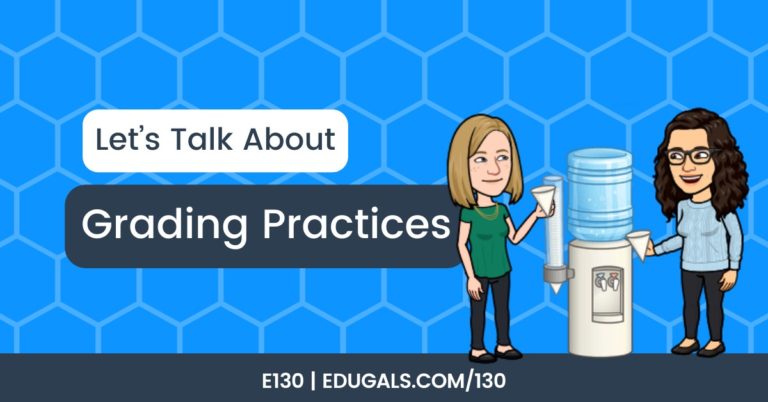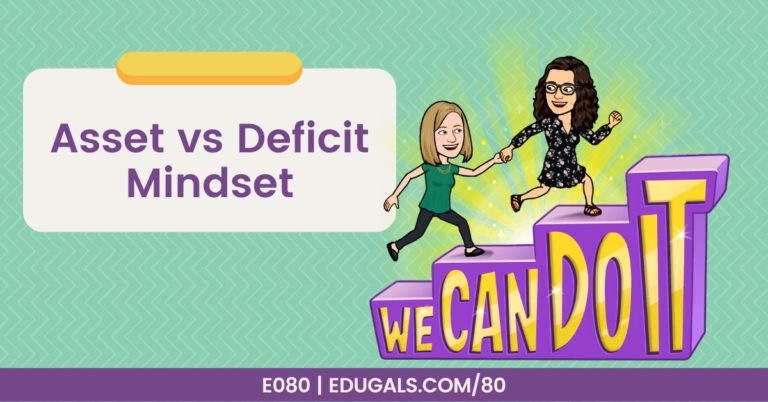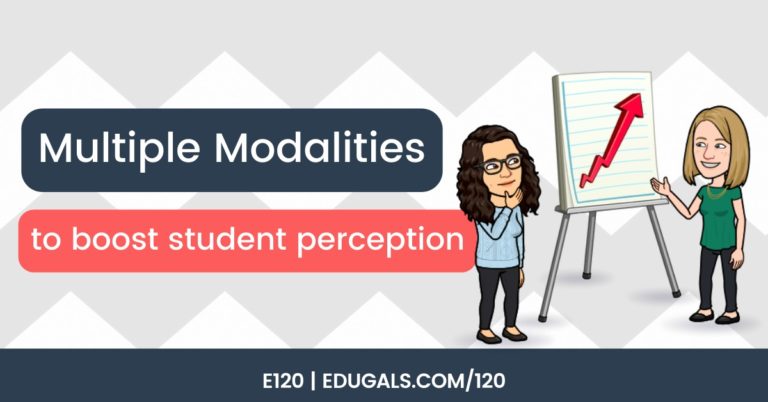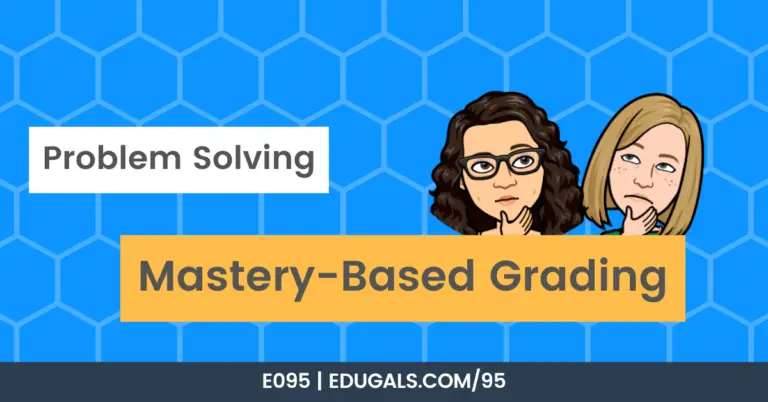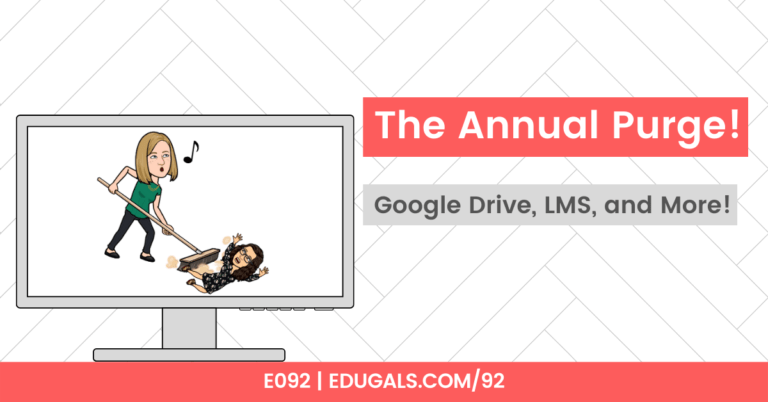[podcast_subscribe id=”7428″]
In this episode, we are returning to the Universal Design for Learning (UDL) framework, and taking a look at providing options for comprehension. We are going to share different strategies on how we can make information accessible to students, and how they can take that information and transform it into knowledge that they can use.
If you like what you hear, we would love it if you could share this episode with a colleague or friend. And make sure you subscribe so that you don’t miss out on any new content! And consider supporting the show by buying us a coffee or two!
We would love to hear from you – leave a comment on our website OR check out our FLIP!
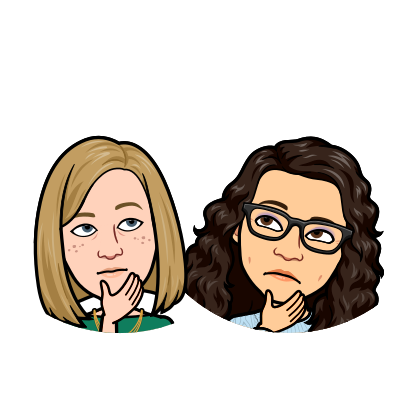
Show Notes
This week, we are returning to the UDL framework once again. We are looking specifically at the pillar for providing options for comprehension, which falls under Representation.
This section is the final area within the Representation pillar, and there is a lot of great ideas and knowledge to share. For those new to this discussion, we are using the UDL framework from cast.org, where they break down the components and help educators to better understand how this can be used in their classrooms.
One of the key pieces of information that they stress is the fact that it’s not just about making information accessible to learners; education is about teaching learners how to transform that information into usable knowledge. This idea is so powerful, as it reminds us that learning isn’t just about spitting back the knowledge we have taught them – it is so much more.
Cast.org also references cognitive science research, which really reminded us of the book study we just recently finished – Why don’t students like school? by Daniel Willingham. It helped us to connect the dots between everything that we have been learning so far. The idea that learning and thinking have to be active, and that we can’t just sit back and take things in if we hope to use that knowledge in different ways, was really a big area of focus when looking at this section of UDL.
With that in mind, this area focused quite a bit on developing information processing skills, such as selective attending, integrating new information with prior knowledge, strategic categorization, active memorization, and more. It all brings it back to this idea that we have to make sure we are designing our lessons and scaffolding information in a way that allows students to access the knowledge and then work their way through it to process and use that knowledge in different ways.
In this area, there are four different checkpoints, which we will discuss to help you better understand the role of educators with respect to comprehension and UDL.
Checkpoint 1: Activate or supply background knowledge.
One of the biggest takeaways here is that educators have to make sure we are designing lessons and scaffolding information in a way that allows students to access the knowledge and work their way through it. The goal is for students to process and use that knowledge in a new way or context.
This stresses the importance of the knowledge that students bring with them into our classrooms. Students bring with them such a range of lived experiences, prior learning, etc. and it’s important that we provide them with opportunities to use these skills and the information that they know to make sense of what we are teaching.
If a student lacks the background knowledge, it’s important that we can know this so that we can ensure they have what they need to be successful. This reinforces the idea that we need to take the time to get to know our learners, figure out what they know, what their education experiences have been, and make sure students see how their knowledge fits with what we are teaching them.
From there, ideas are provided to help educators see how we can successfully provide a link between prior knowledge and new learning. One such idea is the use of visuals and images. Visuals can go a long way to help bridge a language gap, build vocabulary, and tend to pack a pretty powerful punch. While it tends to be a very effective strategy for English language learners (ELLs) in particularly, it helps all other learners too.
Katie always tends to approach new learning through the lens of how it will support ELLs, but it’s worth a reminding all educators that what is good for ELLs is really good for all students in the classroom.
Other suggestions are concept anchoring and concept mastery routines. This reminds Rachel of a text that she has read called Learning that Transfers, by Julie Stern et al. She has mentioned this resource before, but it is worth mentioning again! This text goes through a teaching strategy where educators set up a course in such a way that it anchors everything in concepts. This is a helpful way to activate prior knowledge.
The IB curriculum for chemistry is changing this year to lay out the content in terms of concepts, linking it to all the various topics and areas within that skill or concept. Showing this to students is a great way to allow them to see how things are connected, and to activate the background knowledge that they have to connect it to new learning and new concepts.
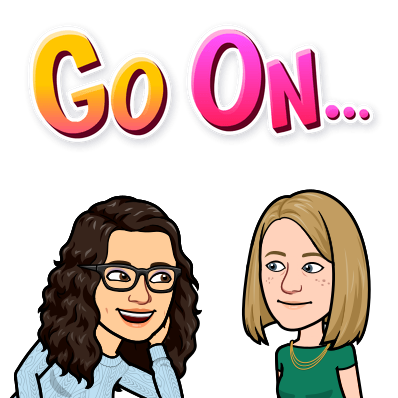
Other examples include the use of KWL charts (know, want to know, learned), concept maps, etc. These are great ways to get students thinking about what they already know, and what they are learning.
Concept maps, for example, are a great way to get students thinking about prior learning and background knowledge at the beginning of a unit. Having students brainstorm all of the things they know about a topic, and then sharing with peers, is a great way to get students to open their minds and ready themselves for new learning. These same concept maps could then me updated at the end of the unit to show students what they have learned, and to allow them to see how their prior knowledge fits with what they have learned.
This checkpoint also suggests that pre-teaching critical concepts through demonstrations or models is a key strategy to ensure comprehension. This means that the teacher does not assume that all students have the prior learning, or that perhaps they may not remember or see the connections of that learning and how it will help them in this new unit or lesson. By using models or demonstrations, it also allows this to be presented in a way that allows students to visualize a process or concept, which could help trigger/activate knowledge they have learned in previous courses or units.
The use of analogies or metaphors is another strategy that allows students to build or remember concepts. The use of everyday situations or actions, but presented in such a way to describe a particular concept, is a great way to help students understand how something works, and to see that mechanic or concept in more general terms.
Checkpoint 2: Highlight patterns, critical features, big ideas, and relationships
This checkpoint takes everything from the previous checkpoint and elevates it to the next level. This is where there becomes a real difference between experts and novices, and the ability to identify information that is important and relevant, versus all the extras that are not important.
It’s all about teaching students the skills to really be able to take apart and pick up on the most important or significant concepts, leaving behind the extra/unimportant information. These skills are relevant across all curriculums, and there are different ways that we can help our students to get there, though it can be extremely difficult.
Here are some ways that educators can support students:
- Use of explicit cues or prompts to draw attention
- Graphic organizers
- Use of examples and non-examples (think Frayer model!)
- Highlight previously learned skills
It really comes back to this idea of conceptual learning and organizing a couse by concepts. This allows you to link familiar and/or unfamiliar topics together by identifying skills and other connections across concepts.
Checkpoint 3: Guide information process and visualization
Within this checkpoint, we are really trying to help students transform all of their new information into usable knowledge. Previously, we’ve provided strategies that they can use to manipulate and process what they are learning, but now we want them to go that next step to remember, process and share this learning. We want students to apply this learning in a different way, versus only being able to present it in the same context or situation in which it was taught.
Here are some helpful strategies that may help students to succeed:
- Explicit prompts for each step in a sequential process
- this stops students from simply jumping to the end or final step, instead making them focus on and complete each step that they need to take to get to that final answer or product
- Provide options for organizational methods and approaches
- tables, charts, organizers – provide options, and consider allowing students to choose what works best for them
- options should allow students to chunk information into smaller elements
- Remove unnecessary distractions, unless essential to instructional goal
- less is more! Don’t overwhelm students with too much information, graphics, etc. – makes it harder to focus; also consider only putting important information in slides, versus every single word or idea
Checkpoint 4: Maximize transfer and generalization
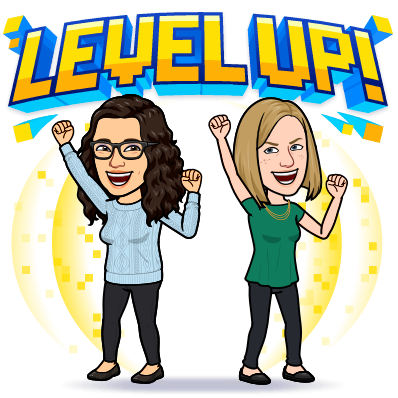
This is all about taking new learning, knowing how to generalize these concepts, and then taking it that step to new context. In order to transfer information to a new context, students need multiple representations to make this possible. This may require differing levels of scaffolding.
Some suggestions to support or scaffold this skill, and that will help students more easily remember or recall information:
- Checklists
- Organizers
- Sticky notes
- Mnemonic strategies and devices
With remembering easier, it gives space for students to be able to transfer that learning to a new context.
This brings us back to Willingham’s book again, where he talks about how difficult and exhausting it is for humans to be constantly thinking, and how connecting ideas to things that we already know and understand minimizes the effort or work that it takes to think. The cognitive load decreases greatly when we can transfer our learning to more familiar concepts, or to use familiar concepts to better understand new learning, and then apply that to new situations.
As educators, we often have review days to give students an opportunity to prepare for bigger evaluations. It’s important that teachers don’t make these completely open and unguided, as it makes it extremely difficult for students, and it can be challenging to figure out where to even begin. Creating a guide or review page that allows students to walk through the unit is helpful, and allows them to recall learning, and then work through problems in such a way where they can make these new connections.
It’s all about finding ways for students to recognize what they know, what they have learning, and to take all of that and be able to apply it in a similar or different situation.
This concludes the comprehension area of representation, the second main pillar or area of UDL. Stay tuned for more UDL in upcoming episodes!

